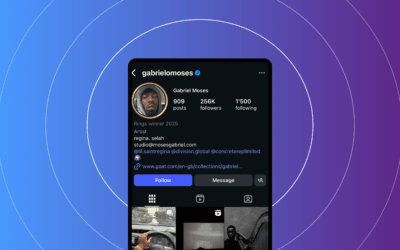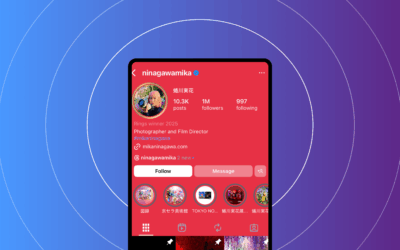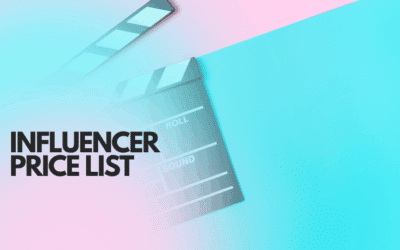Comment créer une marque : Un guide étape par étape pour les spécialistes du marketing moderne
Comment créer une marque reconnaissable, fiable et évolutive ? Ce cadre étape par étape vous accompagne de l'objectif au lancement afin que vos équipes de marketing, de produits et de revenus soient synchronisées. Si vous vous êtes déjà demandé comment créer une marque sans avoir recours à des ateliers interminables ou à de vagues présentations, vous êtes au bon endroit.
À la fin, vous aurez :
- Un modèle de dossier de marque d'une page
- Un cadre de proposition de valeur unique (UVP) que vous pouvez tester
- Une carte des piliers du contenu qui clarifie le contenu de la marque par rapport au contenu propre à la marque
- Une liste de contrôle de lancement de 6 à 8 semaines avec les propriétaires et les critères de réussite
Pourquoi cela est important aujourd'hui : les marques fortes se développent plus rapidement et résistent mieux à la volatilité. Les études de McKinsey sur le marketing et les marques montrent que la construction d'une marque augmente le pouvoir de fixation des prix et stimule la croissance lorsqu'elle est associée à des expériences cohérentes et distinctives.
(Source : McKinsey Growth, Marketing and Sales insights, https://www.mckinsey.com/business-functions/growth-marketing-and-sales/our-insights)
Transformons cela en un plan pratique que vous pourrez mettre en œuvre ce trimestre. Pour la stratégie de marketing d'influence, voir Stratégies de marketing d'influence pour 2025 : AI, 4 M, Exemple.
Cadre étape par étape
Une marque est la somme des perceptions des clients, façonnée par l'objectif, l'expérience, le message et les signaux au fil du temps. Notre flux en quatre parties est le suivant : Stratégie, Identité, Contenu et Gouvernance.
- Définir l'objectif et le public
- Créer un positionnement et une UVP
- Construire une identité visuelle et une voix
- Créer des bases de contenu (contenu de marque vs contenu de marque)
- Définir la gouvernance et les approbations
- Mesurer et répéter
Dans les sections ci-dessous, vous trouverez des modèles, des exemples et des points de contrôle qui vous permettront d'avancer rapidement et de rester en phase.
Comment créer une marque : Définir l'objectif, le public et le positionnement
Clarifier l'objectif de la marque et l'étoile polaire
L'objectif de la marque est le résultat à long terme que vous obtenez pour les clients et la société. C'est l'étoile polaire qui guide le produit, le marketing et les partenariats.
- Nous existons pour... (une phrase)
- Nous aidons [le public cible] à faire/éviter [résultat] en [comment].
- C'est important parce que... (fiche d'impact)
La finalité mérite l'attention lorsqu'elle éclaire les décisions - quelles fonctionnalités construire, quels partenaires choisir et quelles priorités adopter. (Source : Recherche Forrester sur la marque et l'expérience, https://www.forrester.com/)
Identifier le public cible et les profils d'acheteurs
Soyez précis avec la segmentation B2B/SaaS. Démarrage rapide :
- Firmographie : secteur d'activité, taille de l'entreprise, chiffre d'affaires, pile technologique
- Démographie : rôle, ancienneté, région
- Psychographique : ambitions, attitudes, tolérance au risque
- Comportemental : déclencheurs d'achat, habitudes d'évaluation, facteurs de renouvellement
Élaborer 2 à 4 PIC et 3 à 5 profils d'acheteurs. Inclure :
- Rôle/titre, objectifs, problèmes
- Facteurs de décision et préférences en matière de contenu
- Influenceurs du comité d'achat
Validez avec 5 à 10 entretiens rapides avec des clients et des analyses. Relevez les termes de recherche du site, les requêtes de marque par rapport aux requêtes sans marque, et les raisons de la victoire ou de la défaite afin de les corroborer. Pour en savoir plus sur le comportement des consommateurs et les formats de contenu qui incitent à l'action, consultez les études de NielsenIQ et Think with Google. (NielsenIQ : https://nielseniq.com/global/en/insights/ ; Think with Google : https://www.thinkwithgoogle.com/)
Positionnement et proposition de valeur (UVP)
Utilisez ces modèles pour rédiger des déclarations d'UVP claires :
- Phrase UVP : Pour [le client cible], [la marque] est la seule [catégorie] qui [bénéficie] parce que [raison de croire].
- Positionnement sur 3 lignes :
- Catégorie : Nous sommes en concurrence dans [catégorie/contexte défini(e)].
- Différenciation : Contrairement aux [alternatives principales], nous avons une [capacité unique].
- Preuve : Prouvé par [preuve : données, cas, technologie, équipe].
La cartographie des concurrents sur une grille à deux axes permet de tester l'unicité. Extrayez trois facteurs de différenciation pour lesquels les clients sont prêts à payer, et effectuez un test de résistance : un concurrent pourrait-il revendiquer cela demain ? Si c'est le cas, c'est qu'il n'est pas assez unique. Pour une réflexion pratique sur la différenciation et la croissance, voir Bain insights on customer strategy and growth. (https://www.bain.com/insights/)
La croissance fondée sur des preuves est importante. Pour en savoir plus sur la croissance axée sur les objectifs et la construction de la marque, consultez l'étude de Forrester sur la marque et l'expérience. (Source : https://www.forrester.com/)
Lien interne connexe : Pour un traitement plus approfondi de la création d'une UVP et d'un cadre de messagerie, voir notre guide sur la stratégie des piliers du contenu. Stratégie des piliers de contenu
Comment créer une marque : Identité visuelle, voix et contenu
Les bases de l'identité visuelle
Traduire la stratégie en règles de conception que votre équipe peut appliquer. Points essentiels :
- Logo : variantes pour l'usage principal, les fonds sombres/clairs et les petites tailles
- Système de couleurs : palette primaire de trois couleurs plus quatre couleurs secondaires ; définition des objectifs de contraste.
- Typographie : familles de polices, tailles, hauteur des lignes pour les titres, le corps du texte et les légendes.
- Imagerie et icônes : style de photographie, règles d'illustration et exemples à faire ou à ne pas faire
- Fichiers et dénomination : livraison de SVG/PNG/WEBP ; conventions de dénomination ; inclusion d'un README
Le texte Alt est important pour l'accessibilité. Exemple : Logos décrits comme "logo de la société, [variante]". Les images doivent décrire l'action et le contexte, et pas seulement les objets. Texte alt = gain d'accessibilité.
Voix et ton de la marque
La voix est la personnalité de votre marque ; le ton varie en fonction du contexte (documents, publicités, assistance, etc.). Organisez un atelier rapide sur la voix :
- Choisissez 3 à 5 adjectifs vocaux (par exemple, confiant, amical, pratique).
- Montrer les lignes on-voice et off-voice.
- Fixer des règles de grammaire et de style (virgule d'Oxford, contractions, longueur des phrases).
- Définir des règles de microcopie pour les CTA et les erreurs.
- Définissez le ton en fonction du canal : LinkedIn = professionnel ; blog = pratique ; in-app = concis.
Pour en savoir plus sur le ton et le langage, consultez notre modèle de lignes directrices. Modèle de lignes directrices de la marque
Fondements du contenu : brand content vs branded content
Définitions à adopter :
- Contenu de marque = contenu à long terme, axé sur la valeur, destiné à asseoir l'autorité (leadership éclairé, guides, ressources de type "hub").
- Contenu de marque = contenu de campagne créé avec une étiquette de marque pour un objectif spécifique (partenariats avec des créateurs, articles sponsorisés).
Comparaison rapide (puces) :
- Objectif : le contenu de marque renforce la confiance au fil du temps ; le contenu de marque permet d'obtenir des résultats spécifiques.
- Longueur : Le contenu de marque a tendance à être long ; le contenu de marque est plus court ou épisodique.
- Propriété : Le contenu de marque vous appartient ; le contenu de marque est co-créé avec des partenaires.
- KPI : Le contenu de marque s'intéresse au temps passé sur la page et aux inscriptions ; le contenu de marque se concentre sur la portée et les conversions.
Les voix autorisées sont importantes. Le baromètre de confiance Edelman montre que les voix des pairs et des créateurs influencent les décisions. (Source : https://www.edelman.com/trust/2024-trust-barometer)
Alignement de la stratégie de contenu : définir 3 à 5 piliers correspondant aux étapes du parcours - stratégie, mise en œuvre, cas d'utilisation/ROI, communauté. Voir notre stratégie des piliers de contenu pour un schéma plus détaillé. Stratégie des piliers de contenu
Dynamique de confiance et contenu des créateurs
La confiance augmente lorsque les gens voient leurs pairs. Le baromètre de confiance Edelman et NielsenIQ montrent que les recommandations et la voix des pairs influencent les décisions. (Edelman : https://www.edelman.com/trust/2024-trust-barometer ; NielsenIQ : https://nielseniq.com/global/en/insights/)
Lien interne : Pour consulter les carnets de route des influenceurs et les directives à l'intention des créateurs, voir Stratégies de marketing d'influence pour 2025. Stratégies de marketing d'influence pour 2025
Comment créer une marque : Éléments et architecture de la marque
Les sept éléments essentiels de la marque
Les finaliser avant le lancement :
- Nom de marque - passer l'autorisation légale et les contrôles de domaine/sociaux
- Logo - marque principale et variantes, spécifications de l'espace libre
- Titre d'appel - une promesse externe d'une seule ligne
- Système de couleurs - palette accessible et contrastée
- Typographie - hiérarchie, licence confirmée
- Voix - personnalité, normes grammaticales
- Storytelling/récit de la marque - origine, mission, piliers, éléments de preuve
Les options d'architecture de la marque permettent de changer d'échelle : Marque principale, marques secondaires, marques approuvées. Choisissez une structure adaptée à votre stratégie et à votre gamme de produits.
La hiérarchie des messages va du haut vers le bas : valeur de l'entreprise → avantage du produit → preuve de la fonctionnalité. Veillez à la cohérence des noms et hébergez les actifs dans une bibliothèque partagée et versionnée. La clarté de la propriété permet d'éviter les doublons.
Lignes directrices et cadres de messages
Des modèles que vous pouvez réutiliser :
- Présentation (30 secondes) : Nous aidons [le public] à obtenir [résultat] grâce à [ce que vous faites].
- Points de preuve : Trois résultats mesurables que vous pouvez vérifier (par exemple, "Réduire le temps d'accueil de 43%").
- Pyramide de messages : Message principal → trois messages complémentaires → preuves → CTA par étape du parcours.
Testez les titres et les lignes d'objet à l'aide de courtes expériences. Soutenez les messages avec le contenu de la marque - guides, études de cas et explications. Pour approfondir la question des messages, consultez notre Guide de la pyramide des messages.
Comment créer une marque : Positionnement, message et stratégie de distribution
Cadre de messagerie
Construisez votre cadre étape par étape :
- Message principal : L'idée la plus importante que vous voulez que l'on retienne.
- Trois messages de soutien : Chacun d'entre eux aborde un problème ou un gain important.
- Trois points de preuve : Des données, des cas ou des démonstrations qui appuient vos affirmations.
- Un CTA par étape : Sensibilisation (apprendre), considération (comparer), décision (essayer/acheter).
Exemple de plateforme de flux de travail SaaS :
- Le cœur de métier : "Expédiez vos campagnes deux fois plus vite sans embaucher de personnel supplémentaire".
- Support 1 (Efficacité) : "Automatiser les tâches répétitives à l'aide d'outils.
- Soutien 2 (visibilité) : "Voir le statut et les bloqueurs dans un tableau de bord".
- Support 3 (Gouvernance) : "Modèles et approbations sécurisés intégrés".
- Preuves à l'appui : "Délai médian de publication de 41% en 60 jours" ; "Vérification SOC 2 Type II" ; "Plus de 500 modèles de flux de travail".
- CTAs : "Obtenir le guide", "Voir une démo de 3 minutes", "Commencer gratuitement".
Testez les titres des héros et les lignes d'objet des courriels. Organisez cinq micro-interviews avec votre PCI et partagez votre page d'accueil pour savoir ce qu'ils comprennent et ce qu'il faut ajuster. Soutenez les messages avec le contenu de la marque - guides, études de cas, explications.
Adaptation spécifique à chaque canal (manuels de jeu, pas d'invention à partir de zéro) :
- Blogs/propriétaires : Articles de référencement à long terme, pages piliers, actifs gated ; réorientation vers le courrier électronique et les réseaux sociaux
- Propriétaire : Blog, centre de ressources, email
- Gagné : Relations publiques, messages d'invités, podcasts
- Paid : Social et recherche avec des mesures claires de l'effet de levier
- Créateurs : Partenariats pour un contenu de marque ciblé
Brand content vs branded content en pratique
- Contenu de marque : Webinaires éducatifs et blogs piliers à valeur ajoutée
- Contenu de marque : Vidéos dirigées par des créateurs et séries sponsorisées pour atteindre de nouveaux publics
- Marque + CGU : Inviter les utilisateurs les plus actifs à partager des modèles ; les regrouper dans un hub
La transparence est importante. Respectez les règles locales en matière de divulgation pour les partenariats avec les créateurs (conseils de la FTC). (Approbations et divulgations de la FTC : https://www.ftc.gov/) Les modèles de confiance d'Edelman montrent des avantages évidents lorsque les partenariats sont transparents. (Baromètre de confiance Edelman : https://www.edelman.com/trust/2024-trust-barometer)
Liens internes : Pour consulter notre guide de l'influenceur et les directives à l'intention des créateurs, voir Stratégies de marketing d'influence pour 2025. Stratégies de marketing d'influence pour 2025Pour des conseils sur les micro-influenceurs, voir Qu'est-ce qu'un micro-influenceur ? Un guide moderne pour les marques et les spécialistes du marketing. Qu'est-ce qu'un micro-influenceur ?
Comment créer une marque : Feuille de route, tactiques et calendrier de mise en œuvre
Liste de contrôle pour un lancement en 4-8 semaines
- Semaine 0 (préparation) - Audit de la marque (actifs, base analytique, carte des concurrents) ; alignement des parties prenantes. (Propriétaire : responsable de la marque)
- Semaine 1-2 (Stratégie) - Finalisation de l'objectif, de l'audience, de l'UVP ; construction de la pyramide des messages ; approbation par la direction. (Propriétaire : responsable de la marque + marketing produit)
- Semaine 3 (Identité) - Finaliser le logo, les couleurs, la typographie, les directives vocales, la bibliothèque de ressources, les conventions de dénomination. (Propriétaire : responsable de la création)
- Semaine 4 (contenu) - Publier du contenu pilier (>1 500 mots) et un lead magnet ; starter social content. (Propriétaire : Content lead)
- Semaine 5-6 (Activation) - Effectuer 1 à 3 tests de marque pour les créateurs ; lancer deux expériences payantes. (Propriétaire : propriétaires de chaînes + responsable des créateurs)
- Semaine 7-8 (Gouvernance et optimisation) - Finaliser les flux de travail de gouvernance et le langage de divulgation ; mesurer l'effet de levier initial ; itérer les sujets/créatifs. (Propriétaire : responsable de la marque + analytique)
OKR à 90 jours (exemple) :
- +25% de sessions organiques vers le contenu de la marque
- 3 activations de marque dirigées par des créateurs avec une moyenne de 25% VTR
- +15% d'augmentation des requêtes de marque
Cadence et campagnes
Suggestions de cadence :
- Blog : 1 à 2 articles piliers par mois + articles de soutien hebdomadaires
- Email : Lettre d'information hebdomadaire + séquences déclenchées
- Social : 3-5 posts/semaine ; 1 partenariat avec un créateur par mois
- Payé : 3 à 5 variantes par ensemble d'annonces ; fenêtres d'apprentissage de 7 à 14 jours
Comment créer une marque : Mesure, optimisation et croissance
Mesures de la santé de la marque
Mesure mensuelle, révision trimestrielle :
- Sensibilisation : enquêtes assistées/non assistées ; part de voix
- Considération : augmentation des requêtes de marque ; impressions de recherche
- Affinité : NPS ; sentiment dans les commentaires
- Préférence et défense des intérêts : augmentation des conversions grâce aux campagnes de la marque
Outils : GA4 pour le trafic/les conversions ; Brandwatch ou Hootsuite Insights pour le SOV ; outils d'enquête pour les enquêtes sur les marques.
Mesures de performance du contenu
Faire correspondre les indicateurs clés de performance au type de contenu :
- Contenu de la marque : temps passé sur la page, visiteurs récurrents, inscriptions
- Contenu de marque : portée, taux de consultation, CPA
- CGU : engagement, taux de réutilisation, sentiment
Attribution : effectuer des tests d'incrémentalité avec des personnes retenues pour les grands paris. Les études sur les petits effets de levier clarifient la valeur.
Questions fréquemment posées
Q : Comment puis-je créer ma propre marque ?
R : Commencez par clarifier l'objectif et le public, élaborez une proposition de valeur unique, construisez une identité visuelle et verbale cohérente, créez un contenu de marque reproductible et mettez en place une gouvernance pour protéger la cohérence - puis mesurez et réalisez des itérations.
Q : Qu'est-ce que la règle des 3-7-27 en matière d'image de marque ?
R : La règle des 3-7-27 suggère que les gens se souviennent de 3 choses sur une marque en 7 secondes qui déterminent 27% de leur comportement futur ; utilisez cette règle pour donner la priorité à la clarté, à la rapidité et à la mémorisation dans les messages.
Q : Quels sont les 5 C de l'image de marque ?
A : Clarté, cohérence, crédibilité, créativité et connexion. Définissez chacun de ces éléments, ajoutez un élément de preuve et déployez-les sur votre page d'accueil et votre matériel de vente.
Q : Quels sont les 7 éléments de la marque ?
A : Nom de la marque, logo, slogan, système de couleurs, typographie, voix, narration de l'histoire/de la marque.
Q : Combien de temps faut-il pour créer une marque ?
R : La plupart des équipes mettent en place une marque fonctionnelle en 6 à 8 semaines et renforcent l'identité et le message sur une période de 6 à 12 mois, à mesure que le contenu s'étoffe et que la notoriété s'accroît.
Visuels, modèles et suggestions de texte Alt
Exemples de texte Alt pour les images que vous produirez :
- Roue des éléments de la marque - Alt : "Roue présentant sept éléments de la marque : nom, logo, slogan, couleur, typographie, voix, narration.
- Carte des piliers du contenu - Alt : "Diagramme mettant en correspondance les 4 piliers du contenu avec les étapes du parcours de l'acheteur.
- Feuille de route en 8 semaines - Alt : "Calendrier des tâches liées à la marque, de l'audit à l'activation, sur une période de huit semaines.
- Organigramme de gouvernance - Alt : "Organigramme du flux de travail d'approbation avec les rôles RACI.
- Pyramide des UVP et des messages - Alt : "Pyramide montrant le message principal, les supports, les points de preuve, les CTA".
- Calendrier éditorial - Alt : "Calendrier mensuel avec les sujets, les propriétaires et les indicateurs clés de performance".
Conclusion
Vous disposez désormais d'un cadre pratique en quatre parties - stratégie, identité, contenu et gouvernance - et des outils nécessaires pour le mettre en œuvre : un résumé de la marque, un modèle d'UVP, des piliers de contenu et une feuille de route en huit semaines. Commencez par un audit, clarifiez votre objectif et votre public, finalisez l'identité et la voix, publiez le contenu fondamental de la marque et mettez en place un flux de travail de gouvernance simple.
Si vous vous demandez comment créer une marque qui passe à l'échelle, la prochaine étape est l'action. Téléchargez gratuitement le dossier de marque et le calendrier de contenu, participez à notre prochain atelier en direct ou contactez-nous pour une séance de stratégie pratique. Votre marque se développe lorsque vous vous montrez cohérent - une histoire claire, un atout utile et un moment de confiance à la fois.
Liste de contrôle rapide
- Objectif, PIC, UVP et pyramide approuvée
- Kit d'identité livré et accessible
- Piliers du contenu et calendrier de 90 jours prêts
- Gouvernance, RACI et langage de divulgation
- Plan de mesure avec tableaux de bord en direct
Sources et lectures complémentaires
- Baromètre de confiance Edelman (consulté en septembre 2025) : https://www.edelman.com/trust/2024-trust-barometer
- NielsenIQ insights (consulté en septembre 2025) : https://nielseniq.com/global/en/insights/
- McKinsey insights (consulté en septembre 2025) : https://www.mckinsey.com/business-functions/growth-marketing-and-sales/our-insights
- Bain insights (consulté en septembre 2025) : https://www.bain.com/insights/
- Forrester research (consulté en septembre 2025) : https://www.forrester.com/
- FTC endorsements and disclosures (consulté en septembre 2025) : https://www.ftc.gov/
- Think with Google (consulté en septembre 2025) : https://www.thinkwithgoogle.com/
- Comment les marques se développent (toutes sources confondues) : https://www.howbrandsgrow.com/
- The Brand Gap (consulté en septembre 2025) : https://www.martyneumeier.com/books/the-brand-gap
- Start with Why (consulté en septembre 2025) : https://simonsinek.com/
- Building a StoryBrand (consulté en septembre 2025) : https://storybrand.com/
- Interbrand Best Global Brands (consulté en septembre 2025) : https://www.interbrand.com/best-global-brands/
- BrandZ Top 100 Global Brands (consulté en septembre 2025) : https://www.brandz.com/
- AMA Branding 101 (consulté en septembre 2025) : https://www.ama.org/topics/branding/
- IDEO : How to Build a Brand (consulté en septembre 2025) : https://www.ideo.com/post/how-to-build-a-brand
- Coursera Brand Management (consulté en septembre 2025) : https://www.coursera.org/learn/brand-management
- LinkedIn Learning Brand Strategy Foundations (consulté en septembre 2025) : https://www.linkedin.com/learning/brand-strategy-foundations
- BCG insights (consulté en septembre 2025) : https://www.bcg.com/insights
Articles sur le marketing d'influence
Des conseils pratiques pour mieux réussir ses campagnes de marketing d'influence
Qui est Gabriel Moses ?
Découvrez Gabriel Moses, l'artiste né à Londres qui mêle mode, musique et patrimoine dans des récits visuels saisissants. De Dior à Johnnie Walker, voyez pourquoi il façonne la culture.
Qui est Mika Ninagawa ?
Découvrez Mika Ninagawa, photographe et réalisatrice visionnaire de Tokyo célébrée pour son art vif, ses récits audacieux, et gagnez à Instagram Rings 2025.
Liste de prix des influenceurs : Ce que les marques paieront en 2025 et 2026
Une liste de prix pour les influenceurs est un ensemble de tarifs et de conditions que les créateurs (ou leurs agents) fournissent - la base pour budgétiser, négocier et prévoir les campagnes d'influence.






